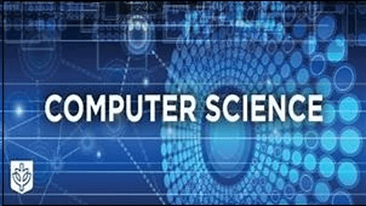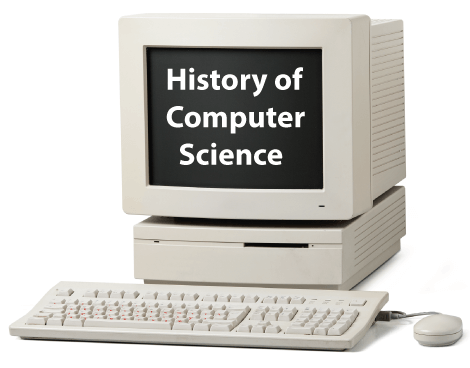What is Computer Science

Generally, the word ‘science’ refers to the study of principals and the computation of a particular concept. Like General Science or Social Science, Computer Science is the scientific study of a computer system. It represents the theoretical study as well as practical implementations of a computer system. It incorporates all information on hardware and software parts. From brief to detailed, each related concept of a computer system is explained in it. It describes each part and process held in a computer system covering all parts from the core to its advanced topics. It lets us know and learn about algorithms, processes, programs, data representation, and the method of computing the digital information. Its discipline introduces various algorithms and data structures, network designing, concepts of programming and modeling, and artificial intelligence. Computer Science foundations are covered from mathematics and engineering subjects that result in electronic circuit design techniques, techniques from probability and statistics, etc.
Disciplines of Computing
Computer Science relates and belongs to the family of five separate but interrelated disciplines, which are collectively known as the Discipline of Computing. These disciplines are separated, but interrelated means that although they cover different concepts for research, their objective of the study is computing, which is the same for each. These five disciplines are:
- Computer Engineering
- Computer Science
- Information Systems
- Information Technology
- Software Engineering
Associations and societies including IEEE-CS (the IEEE Computer Society), ACM (the Association for Computer Machinery), and AIS (the Association for Information Systems) have collaborated and working since 1991 in order to develop and enhance the taxonomy of these disciplines and guidelines for the educational institutions all over the globe which use these disciplines for research, postgraduate, and undergraduate programs.
Fields of Computer Science
A computer scientist is a person who researches and studies the theory of computation and design of software systems. As per the study, the fields of Computer Science are divided into two parts:
- Theory, or Theoretical Part: It emphasizes on the abstract concepts such as Computational complexity theory, Programming language theory, Human-computer interaction theory (deals with the usefulness, usability, and accessibility of a computer system), Computer Architecture, Computer Engineering, and so on.
- Practical Disciplines: It deals with the practical implementation of computational science. Computational science refers to the computation and use of algorithmic techniques for modeling scientific data. It also emphasizes computer graphics and visualization for implementing real-world applications, networking, databases and information systems, practical knowledge of the operating system to become capable of tackling the system issues.
Both these fields together complete the study of Computer Science because there may be some issues or points that can be better expressed when practical implementations are performed. Also, the theory remains temporary until understood practically.
History and Development of Computer Science

The development root of Computer Science relates to some distinguishable fields, which are:
- Mathematics: It gave the notions and introduced the concept of ‘binary number system’ and ‘stored program’. It was understood that we could represent the information in the form of zeros and ones and store them in the system.
- Physics and Electrical Engineering: It stroked Boolean algebra’s idea for circuit design, where it became possible to produce arbitrary outputs (false or true) by combining the inputs of electrical impulses to a circuit by Boolean algebra. It became possible to design a circuit with binary value inputs and get the desired combination of 0’s and 1’s as its output. Hence, the invention of the transistor, invention of optical, electronic, and magnetic media for the transmission and storage of information came into existence.
- Management information systems: These systems are known as Data processing systems that describe the method of processing the data. It led to the notion and evolution of concepts such as fetching information, searching, sorting, databases, and GUIs (Graphical User Interfaces.
All these fields led to the development of Computer Science.
1623: A scientist named Wilhelm Schickard designed and constructed the mechanical computer, the first working calculator.
1673: Gottfried Leibniz demonstrated a digital mechanical calculator known as Stepped Reckoner. Gottfried Leibniz was considered as the first computer scientist and information theorist.
1820: Thomas de Colmar invented Arithmometer, the first strong and reliable calculating machine to be used in offices for daily purposes. With this, he also launched the industry of mechanical calculator.
1822: Charles Babbage began to design the Difference Engine (the first automated mechanical calculator), which gave rise to the idea of Analytical Engine. The Analytical engine was the first programmable mechanical calculator. In 1834, he began to develop the Analytical Engine, and within two years, he sketched many salient features of the modern computer.
1843: Ada Lovelace translated and wrote a French article on Analytical Engine in which she published the algorithm to compute the Bernoulli numbers. It was considered the first published algorithm to be implemented on a computer.
1885: Tabulator was invented by Herman Hollerith, in which he used punched cards for processing the statistical information. With this, Herman’s company became part of IBM.
1937: Howard Aiken initiated the ASCC/Harvard Mark me (known as the giant programmable calculator) after convincing IBM to develop it. The giant calculator was based on the Charles Analytical Engine. The ASCC/Harvard Mark I was able to use punched cards and CPU (Central Processing Unit) on its own. It was believed that after 100 years of impossible Babbage’s dream, it had become possible, and the dream came true.
1940: The ENIAC and Atanasoff-Berry computer, which was known as the new and more powerful computing machines, were developed. The term ‘computer’ referred to the machines and their working. It was proved that more than calculations, computers could be used for other computation works also. The field of Computer Science was broadened to the study of computation.
1945: IBM (International Business Machines) founded the Watson Scientific Computing Laboratory at Columbia University, New York.
1950 and 1960: In this period, Computer Science started to establish as a distinct academic discipline.
1953: At the University of Cambridge Computer Laboratory, the Cambridge Diploma in Computer Science began. The diploma was the world’s first computer science degree program. On the other side, the first transistorized computer was built by the University of Manchester. The transistorized computer was known as the Transistor Computer.
1962: The first department of Computer Science was formed in the Purdue University, United States.
1959: Mohamed Atalla and Dawon Kahng invented the MOSFET or MOS, i.e., metal-oxide-silicon field-effect transistor at Bell Labs. MOS was the first truly compact transistor which could be miniaturized and mass-produced for wide uses. It became possible to build high-density integrated circuit chips known as the computer or microcomputer revolution.
Etymology of Computer Science
In 1959, the term ‘computer science’ appeared in an article in Communication of the ACM for the first time. The writer Louis Fein in the article argued for the creation of a Graduate School in Computer Sciences. Finally, in 1962, the writer’s efforts, including the efforts of numerical analyst George Forsythe were rewarded. Hence, universities began to create the departments of Computer Science, and the creation started at Purdue. A Danish scientist Peter Naur suggested terms ‘Datalogy’ and ‘Data Science’. In 1969, the University of Copenhagen became the first scientific institution to use the term in its ‘Department of Datalogy’, and Peter Naur became the first professor in Datalogy. Numerous terms for the computing field were suggested to the practitioners in the Communication of the ACM. These names were flow-charts-man, turologist, turingineer, applied meta-mathematician, applied epistemologist. After three months, ACM also suggested the term Comptologist, then the hypologist, and then Computics was suggested. Computer Science was supposed to have a close relationship with maths because computer science was highly influenced by the work of Mathematicians like Alan Turing and many other personalities. Later on, the bond between computer science and software engineering came as an issue. In this dispute, David Parnas claimed that the objective of studying computer science is the properties of computation, and on the other hand, the objective of studying software engineering is the designing of specific computations for fulfilling the practical goals. Hence, it was seen that the academic, funding, and political aspects of it became dependent on whether to form mathematics emphasized department or engineering emphasized department. Finally, both the departments made efforts to bridge the computer science field educationally all over the globe.
Disciplines of Computer Science
After various revolutions in the history of Computer Science and after the encompassment of the Computer Science degree, various new disciplines in the field of Computer Science were introduced. So, if there are aspirants of Computer Science, they must gain the deepest knowledge they can. All the aspirants should understand the specializations and disciplines of Computer Science effectively. Thus, there are following specialization areas for the students who are pursuing the Computer Science degree:
- Bioinformatics
- Applied Mathematics
- Computational Physics
- Microprogramming
- Networks And Administration
- Computer Architecture Networks
- Cryptography
- Computer Engineering
- Web Development
- Computer Game Development
- Robotics
- Software Development
- Simulation And Modeling
- Computer Programming
- Software Systems
- Digital Image/ Sound
- Data Management
- Operating Systems
- Design Databases
- Computer Graphics
- Parallel Programming
- iOS Development
- Mobile Development
- Memory Systems
- Artificial Intelligence
The students can take specializations in any of these sub-fields of computer science and also can get great opportunities in their careers. Computer Science has evolved all over the globe. It is like a drug that has created addiction in almost 70% to 80% of people all around.
Applications of Computer Science
Since the evolution of Computer Science, it has become a part of human life. In daily life, we use computer science through its various applications. Few of these applications are:
- Internet Browsing: Whenever we search something on a web browser through an internet connection, the browser uses the search algorithms and parallel computing to find and provide the best results for your query. So, it has become easy to learn about everything through internet browsing.
- Online Shopping: It is similar to window shopping where the shoppers purchase items by sitting at one place. They get lots of discounts and vouchers for online shopping. It is a nice application, but there may be chances of stealing the credit/debit card information. But, no wonder artificial intelligence and network security perform their role too well and prevent our data from stealing.
- Video Games: The whole concept of Video games depends on Computer Graphics. The Graphics Designer and Developer are responsible for creating such video games. It attracts kids to play these games and learn how to play.
In addition to these applications, there are various other applications of Computer Science that we use in our daily life.
Career Options in Computer Science

Computer Science has sparked the world with its charming and fascinating theories, engineering, and experiments. It has led to various developments that saves much time of people daily and has become a helping hand for them.
The different specializations in the field of Computer Science have attracted a lot of students. So, if anyone has an interest in this field can pursue the degree of Computer Science from colleges or universities offering the program and make their career options in the following fields:
- Database Administrator
- Web Developer
- Software Analyst
- Software Engineer/ Hardware Engineer
- Computer System Operator
- Tester
- Coder
- Computer Graphics Designer
- Computer Networking Engineer and lots more.
Know your interest, set your mind, take steps, and grab the opportunities you get.
